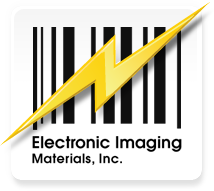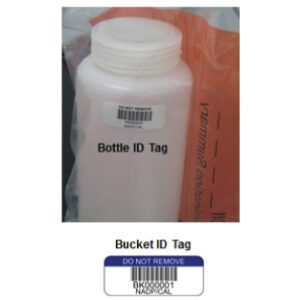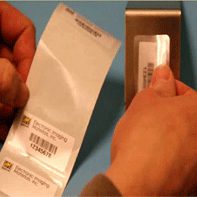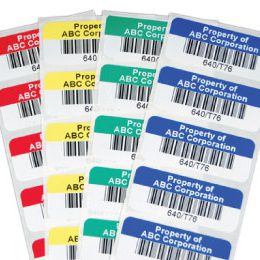One small stripe of color can prevent one big mistake. When lives are on the line, your label design needs to do more than stick. It must communicate clearly, quickly, and consistently. That’s where color coding plays a powerful role.
In the complex world of medical device labeling, color is a critical design choice. It functions as a signal, a safeguard, and an important element of safety. For both manufacturers and healthcare professionals, color-coded labels provide a smarter way to navigate risk, improve workflow, and reduce costly errors across clinical and regulatory touchpoints.
Let’s explore how color coding elevates your medical device label design and why it has become essential in today’s high-stakes environments.

The Role of Color Coding in Medical Device Safety
Color coding delivers immediate visual recognition for information that might otherwise be overlooked. When implemented effectively, it helps:
- Differentiate product categories. Whether it’s surgical tools or diagnostic components, color enables users to instantly identify what they need.
- Distinguish device sizes, types, or usage cycles. Quick visual cues help prevent the wrong item from being used in the wrong context.
- Guide appropriate selection under pressure. In fast-moving clinical settings, color improves accuracy when decisions need to be made in seconds.
From surgical kits to diagnostic tubes, a single colored bar or dot can be the difference between a correct decision and a critical error.
Safety Color-Coding Labels Prevent Costly Errors
In labs processing thousands of samples or operating rooms coordinating high-risk procedures, safety color-coding labels play a vital role in preventing misidentification. When a red dot indicates “single-use only” and a green bar means “ready for sterilization,” these cues eliminate guesswork and help staff follow proper protocols.
These visual indicators are especially valuable when time is limited and attention is divided. They reinforce accuracy in high-pressure environments where even a small labeling error can have far-reaching consequences.
What the Standards Say About Color Coding in Medical Labels
There is no single, universal color code for every device type. However, many segments within the medical field use well-recognized conventions. For example:
- Blue often signals sterile or surgical-grade instruments.
- Red may indicate single-use or biohazard items.
- Yellow frequently denotes caution or attention required.
- Green typically designates clean or ready-for-use devices.
These informal but widespread standards promote consistency across facilities. However, color must always be supported by clear, readable text. Visual codes alone cannot serve as the only point of differentiation.
To remain compliant with FDA and ISO guidelines, any use of color must be deliberate and consistent and never interfere with required content, barcode scanning, or durability standards.
Best Practices for Implementing Color-Coded Labeling
Color coding is not about adding flair. It is about building function. Here’s how to do it right:
Use Color to Highlight, Never Overwhelm
Avoid coloring the entire label. Instead, use stripes, dots, or corner blocks. This preserves scannability while enhancing clarity. Many manufacturers use variable color elements from a data file, such as a colored bar or icon, that can be adapted per SKU, lot, or product type.
Choose Lab-Appropriate Materials
Durability is a must if your labels will be exposed to chemicals, refrigeration, or repeated handling. Color-printed labels should be laminated in lab settings to prevent degradation. This layer helps resist moisture, solvents, and abrasion. Laminated finishes ensure that the sterilization impact on labels does not compromise legibility.
Consider Full Label Sets
Sometimes, a single label is not enough. Use sets that include a matching dot for a cap, a color bar for documentation, and a long-lasting adhesive label for the device itself. This builds consistency across packaging, tracking, and usage touchpoints.
Validate With Real-World Testing
Color-coded labels need to work in real conditions. Test across your workflow from production through clinical use and include end-user feedback. Simulate likely errors and observe how well your color system prevents them. For the system to be effective, every stakeholder must interpret it accurately.
How Color Coding Enhances Supply Chain and Regulatory Compliance
Color-coded labels are a key tool for healthcare workers because they support efficiency and traceability across the medical device supply chain.
Here’s how:
- In warehouses, color cues improve pick-and-pack accuracy, reducing fulfillment errors and improving inventory speed.
- In regulatory audits, color helps separate critical document sets and denote approval stages.
- In sterilization workflows, specific colors track the readiness stage of the item, whether pre-sterilized, post-processing, or awaiting inspection.
When built into your medical device label design, color coding becomes part of your compliance infrastructure, not just your packaging.
Whether you’re labeling vials, surgical tools, or entire device sets, Electronic Imaging Materials can help. We specialize in medical device label design that incorporates strategic color coding, variable data, and protective finishes tailored to your use case. Let us help you reduce risk and improve clarity across your workflow.
Smart Color-Coding Strategies for Medical Device Label Design
Your color system should be customized for your products and processes. These design strategies enhance clarity and usability:
Keep Color Palettes Limited and Intentional
Use a small, defined set of colors to reduce confusion and make onboarding easier. Stick to five to seven core hues and assign each to a specific category or function. The goal is simplicity that still supports rapid recognition.
Pair Color with Shape or Iconography
Reinforce your system with symbols. A triangle, square, or circle combined with color can accommodate users with visual impairments and ensure readability in dim lighting. For example, a red triangle might signal a biohazard, while a blue circle identifies diagnostic use.
Train Your Team on Label Interpretation
A strong design still requires strong training. Integrate label education into onboarding, post updated reference sheets in visible areas, and offer regular refreshers. When staff understand the color system, they make fewer mistakes and work more confidently.
Align Color Systems Across Label Components
Your strategy should extend beyond the label. Apply the same color scheme to caps, packaging, documents, and accompanying materials. This cohesion minimizes errors and builds a smoother workflow from receiving through final use.
When aligned across product lines and departments, color coding drives faster decision-making, clearer traceability, and more consistent compliance.
Make Color Coding Work for Your Device
The benefits of color coding go far beyond visual appeal. When used strategically, it improves accuracy, supports compliance, and enhances the efficiency of your entire operation. However, those results depend on using the right label materials, printing techniques, and layout strategy.
At Electronic Imaging Materials, medical device label design is our specialty. We help organizations create labeling systems with color coding that:
- Survive harsh lab and clinical environments without fading or failing
- Align with FDA and ISO compliance requirements
- Integrate with your existing workflows and packaging processes
Color coding should never be an afterthought. It is fundamental to label performance, safety, and operational excellence. Let’s ensure your labels do their job clearly and consistently every time.
Let EIM Bring Color and Clarity to Your Labels
You deserve more than a generic label. With EIM, you’ll get:

Tailored guidance on medical device label design

Variable color coding built from your data files

Laminated materials engineered for lab conditions
> Reach out today to get started.





